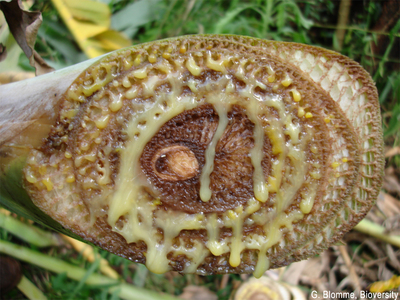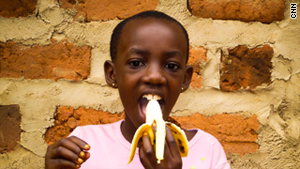
Bacterial infections are a major threat to farmers worldwide and are especially problematic for smallholder farmers in less developed countries who have few tools to combat epidemics. In eastern Africa, banana Xanthomonas wilt (BXW) disease, caused by the Gram-negative bacterium Xanthomonas vasicola pv. musacearum (Xvm), is considered one of the greatest threats to banana productivity. Approximately one-third of the bananas produced globally are grown in sub-Saharan Africa, where the crop provides more than 25% of the food energy requirements for more than 100 million people. Banana is the world's fourth most important food crop after rice, wheat, and maize.
Cultural practices provide some control of BXW but are ineffective during epidemics. Conventional breeding is not an option because bananas are recalcitrant to genetic analysis and because there are no known banana genes for resistance. For these reasons there is an urgent need to develop strategies to control this disease for which there is presently no cure.

In collaboration with Dr, Leena Tripathi at the International Institute of Tropical Agriculture in Uganda and Biosciences, Eastern and Central Africa in Kenya, we have recently transferred the rice Xa21 immune receptor into banana and shown that the engineered bananas "are resistant to BXW in greenhouse assays." If these results are replicated in field trials, this approach will provide an effective strategy for controlling BXW. A similar strategy may be useful for engineering resistance to Xanthomonas disease of cassava. Over 250 million people in sub-Saharan Africa rely on cassava as their staple source of starch where yield losses due to Xanthomonas range from 12% to 100%.
